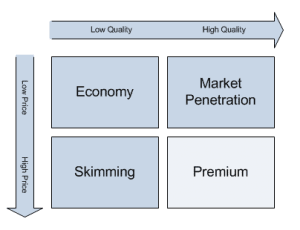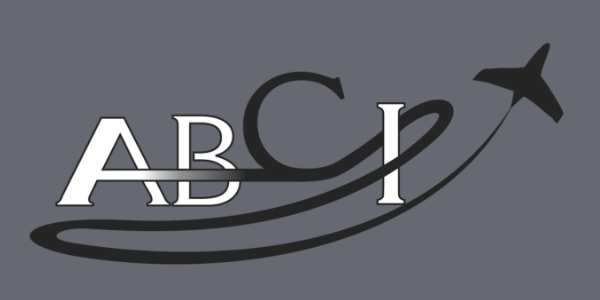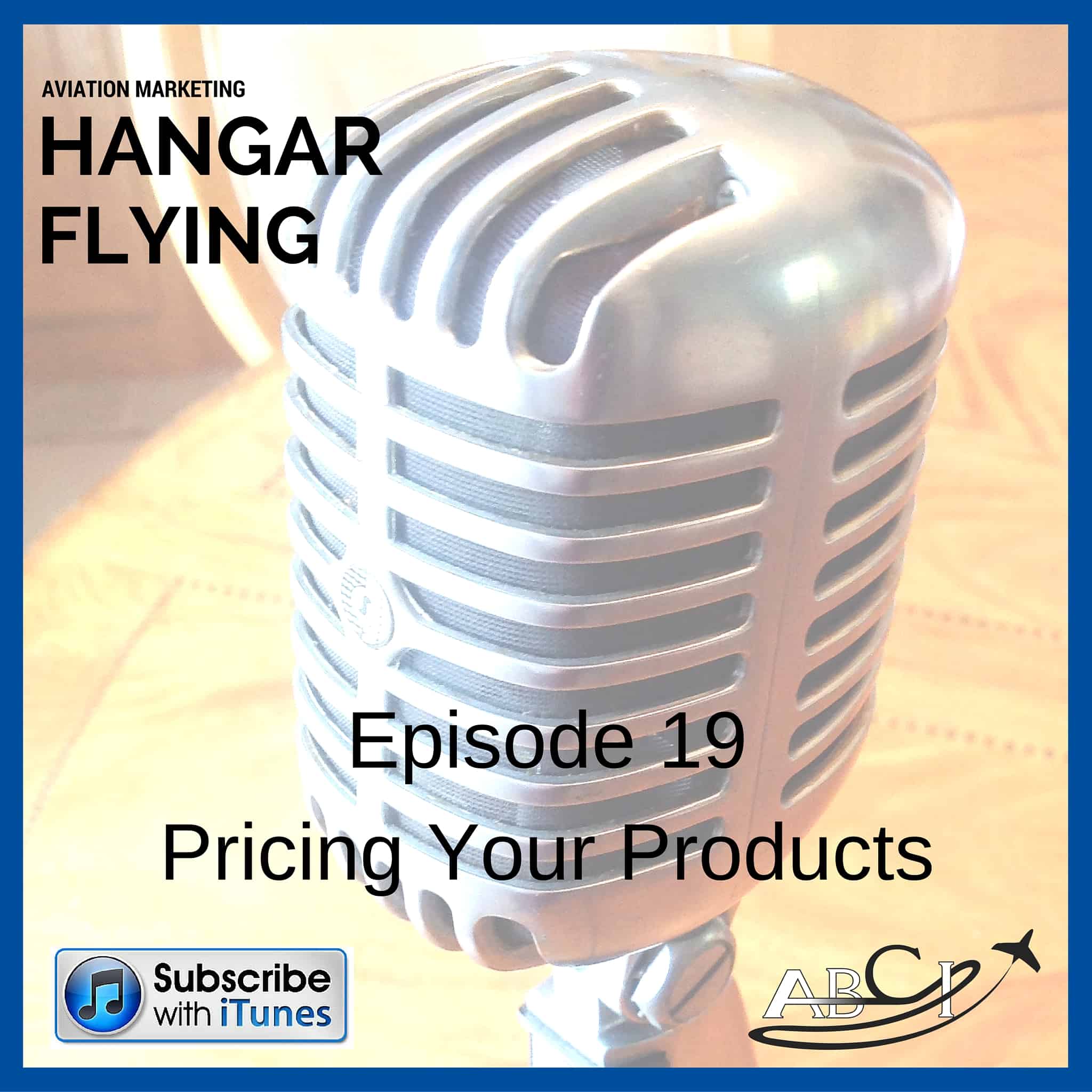Introduction
A pricing strategy is a crucial aspect of business operations that involves setting the right price for a product or service to maximize revenue and profitability. It is a complex process that requires careful consideration of various factors, including production costs, market conditions, customer demand, and competition. A well-executed pricing strategy can increase revenue and profitability, while a poorly executed one can lead to lost sales and revenue.
In the aviation industry, where products and services often come with high costs and significant investments, having an effective pricing strategy is even more critical. Whether you’re selling aircraft, parts, maintenance services, or training programs, the right pricing model can make or break your business. Let’s explore the different aspects of pricing strategies and how they can be applied to aviation products.

Definition of Pricing Strategy
A pricing strategy is a plan or approach used by businesses to determine the prices of their products or services. It involves analyzing the market and customer demand, understanding customer needs, evaluating production costs, and setting competitive prices that maximize profits. In the aviation sector, this could mean balancing the high costs of production and maintenance with the need to remain competitive and attractive to customers.
For instance, a company might use a value-based pricing strategy, where prices are set based on the perceived value to the customer rather than just the cost of production. This approach can be particularly effective in aviation, where quality and reliability are paramount.
Importance of Pricing Strategy in Marketing
Pricing strategy is a critical component of a business’s marketing and revenue strategies. Understanding common pricing strategies is essential for businesses to position themselves effectively in the market. It reflects what customers are willing to pay for goods and services, significantly impacting a company’s profitability. Companies use their pricing strategy to increase sales, reduce costs, compete with competitors, and make a statement about the value of what they offer.
In aviation, a well-crafted pricing strategy can help a company stand out in a crowded market. For example, a premium pricing strategy can position a product as a high-quality, reliable option, which is essential in an industry where safety and performance are non-negotiable. On the other hand, a penetration pricing strategy might be used to quickly gain market share for a new product or service.
Brief Overview of Pricing Strategy Types
Pricing strategy types can be broadly categorized into several key groups, each with its own strengths and weaknesses. Understanding these can help businesses choose the most effective approach for their specific goals and market conditions.
- Cost-based pricing: This involves setting prices based on the cost of producing a product or service, with a markup added to determine the final price. It’s straightforward but doesn’t always account for market demand or competition.
- Competitor-based pricing: This strategy involves setting prices based on what competitors are charging for similar products or services. It helps businesses stay competitive but can lead to price wars if not managed carefully.
- Value-based pricing: This approach involves setting prices based on the perceived value of a product or service to the customer. In the aviation industry, where quality and reliability are paramount, this can be particularly effective.
- Dynamic pricing: This involves adjusting prices in real-time based on various factors such as demand, supply, and competition. Airlines often use dynamic pricing to maximize revenue on flights.
- Penetration pricing: This strategy involves setting a low initial price to attract customers and gain market share quickly. It’s useful for new products but can be risky if the low price doesn’t cover costs.
- Premium pricing: This involves charging a high price for a product or service to create an impression of superior quality and exclusivity. In aviation, this could apply to luxury private jets or high-end maintenance services.
- Bundle pricing: This involves offering multiple products or services together at a single price. For example, an aviation company might bundle aircraft maintenance, pilot training, and spare parts.
- Price skimming: This involves setting a high initial price for a new product or service and gradually lowering it over time. It’s often used for innovative products with little initial competition.
Each of these pricing strategy types has its own strengths and weaknesses, and the most effective approach will depend on the specific business goals, market conditions, and customer needs.
A Word About Marketing Pricing Strategy for Aviation Products
Marketing pricing strategy for aviation products requires a deep understanding of the complex and highly regulated aviation industry. Aviation products, such as aircraft parts and maintenance services, are subject to strict safety and quality standards, and pricing strategies must take these factors into account.
Aviation companies must balance the need to maintain profitability with the need to comply with regulatory requirements and ensure customer safety. This can involve using pricing strategies such as value-based pricing, which takes into account the perceived value of a product or service to the customer, and dynamic pricing, which involves adjusting prices in real-time based on demand and supply.
For instance, a company offering high-quality aircraft maintenance services might use a value-based pricing strategy to reflect the superior quality and reliability of their work. Alternatively, an airline might use dynamic pricing to adjust ticket prices based on factors like booking time, demand, and competition.
By carefully selecting and implementing the right pricing strategies, aviation companies can ensure they remain competitive while meeting the high standards required in the industry.
. A Word About Marketing Pricing Strategy for Aviation Products
ABCI usually gets involved in a marketing campaign AFTER a product has been developed and the marketing pricing strategy has been set. We often simply work with the variables we have. But it’s great when we get to help develop the pricing strategy for aviation products as part of your marketing strategy!
For the sake of this discussion, the product could be anything you’re selling, even a service.
When you’re pricing aviation products, there are several factors to be considered. What other products are on the market competing with this one? Where does this product fall in terms of quality and features?
You’ve probably seen some version of this diagram in marketing textbooks.
Pricing Aviation Products
To quickly explain the pricing models – we have at the upper left the economy model – low quality, no frills, lowest price.
Then we have the market penetration pricing strategy. This is where a company sets a low price to attract customers on a high-quality product with the strategy of raising sales volume and driving out competition. The company raises the price later to make up for losses, after competitors have been driven out. This depends on a long life cycle for the product. It happens in some cable TV or cell phone markets. An alternative in the same category is a “cost plus pricing” strategy. In the cost plus strategy, a service provider prices a project transparently, for parts or supplies. He adds a margin based pricing that usually covers labor, overhead and profit. Profits in these strategies are usually kept very low, with the intention of making up the difference in volume when they have a consumer surplus.
Another effective strategy is freemium pricing. This model offers customers free access to a basic version of a product or service, encouraging them to pay for an upgraded version with additional features. Freemium pricing is valuable in acquiring customers and building relationships, as it provides a taste of the product’s benefits. Successful companies using this model establish trust and brand loyalty before introducing payment options.
Small businesses often err on the side of pricing too low when they enters the market, shooting for a promotion price to gain market share and maximize profits. There are always a certain percentage of consumers for whom pricing discrimination is the primary buying motivator, but most sales people overestimate how unimportant price can be on the balance with other considerations. The psychology pricing is far more complex than simply “the lowest price wins!” There are reasons for many price points and strategies.
[embedyt] [https://www.youtube.com/watch?v=y3es-NKksUo[/embedyt]](LINK 1)
Factors That Determine a Pricing Strategy
Determining the ideal pricing strategy is a complex but critical part of all businesses’ revenue models. Understanding common pricing strategies helps businesses evaluate their options and select the most suitable approach. This process involves several factors, such as cost structure, customer demand, competitive market environment, and overall profitability.
In aviation, the cost structure includes not only the production costs but also the costs of compliance with stringent safety regulations, ongoing maintenance, and customer support. Customer demand can vary widely based on the type of product or service, from commercial airlines to private jet services. The competitive environment is also a significant factor, as companies must consider the pricing strategies of their competitors to remain competitive. Finally, overall profitability must be considered to ensure that the pricing strategy supports the long-term financial health of the business.
Unique Challenges in Aviation Product Pricing
Aviation product pricing presents several unique challenges that can significantly impact pricing strategies:
- Regulatory compliance: Aviation companies must comply with strict safety and quality standards, which can impact pricing strategies. Ensuring compliance often involves significant costs, which must be factored into the pricing model.
- High development costs: Aviation products often require significant investment in research and development, which can drive up costs and impact pricing. This is particularly true for new aircraft models or advanced avionics systems.
- Limited market size: The aviation market is relatively small compared to other industries, which can limit pricing flexibility. With fewer potential customers, companies must carefully balance pricing to attract buyers while covering costs.
- High customer expectations: Aviation customers have high expectations for safety, quality, and reliability, which can impact pricing strategies. Meeting these expectations often requires additional investment in quality control and customer service.
Despite these challenges, effective pricing strategies can help aviation companies maintain profitability and competitiveness in the market. By understanding and addressing these unique factors, businesses can develop pricing models that support long-term success.
Pricing Strategies
This section will cover some of the most common pricing strategies used by businesses.
The skimming pricing strategy is where a higher price is charged for a low quality product. The best example of this is the typical “infomercial product” (pet nail trimmers come to mind) where the product itself is not all that high-quality but a huge, short-term marketing push is made to sell lots of them to early adopters before competitors reach the market.
A pricing method is a specific approach businesses take within their broader pricing strategies. Selecting an appropriate pricing method is crucial for aligning with market demands and achieving revenue goals.
The premium pricing is my favorite as a consumer and as a marketing professional, because high quality products are the best value for the consumer in the long run. Companies with very high quality products or very good service can charge a premium for that product or service. Charging a high price may seem counter intuitive, but it’s my job as a marketing rep to prove to the customer that the price is justified.
You can also use different pricing models for different product lines.
Pricing Tactics
Pricing tactics are specific actions taken by businesses to implement their pricing strategy. These tactics can include discounts, promotions, price matching, and price anchoring.
For example, an aviation company might use bundle pricing to offer a package deal that includes aircraft maintenance, pilot training, and spare parts at a discounted rate. This not only provides more value to the customer but also increases the transaction size and customer loyalty. Another tactic could be dynamic pricing, where prices are adjusted based on demand and market conditions, ensuring that the company remains competitive and maximizes revenue.
Pricing Analysis
Pricing analysis is the process of evaluating the effectiveness of a pricing strategy. It involves analyzing data on sales, revenue, and customer behavior to determine whether the pricing strategy is meeting its goals. Pricing analysis can help businesses identify areas for improvement and make adjustments to their pricing strategy as needed.
In the aviation industry, this might involve tracking the sales performance of different pricing models, such as cost-plus pricing or skimming pricing strategy, and assessing their impact on profit margins. By continuously monitoring and analyzing pricing data, companies can make informed decisions that enhance their competitive pricing strategy and ensure long-term success.
By understanding and implementing these various aspects of pricing strategy, aviation businesses can better navigate the complexities of the market and achieve their financial goals.
How Pricing Too Low Can Hurt You
Many aviation companies are tempted to make a bare-bones, no frills product and charge as little as they can for it. This is a shortsighted pricing strategy in marketing for three reasons –
Reason #3 – “Perceived value.” One Harvard Business Review case study showed that press-on nails sold much better when the price was raised from $1.69 to $6.99. (The product, packaging, and everything else remained the same.) Women who were interviewed later said that they didn’t feel comfortable buying and wearing the cheapest product on the shelf.
Reason #2 – There are always unforeseen costs. Developing, testing, producing and providing customer service for a product takes a lot of time and costs a lot of money. The revenues from sales of the product have to sustain your company, your employees, customer service, research on new products, and, of course, the marketing you need to do to attract customers. Your profit margin is worth protecting! Don’t short-change your company by underpricing your product or service.
Reason #1 – (Most important) Quality is worth working for and worth paying for. Building a better product costs more. It involves more research, more testing, and better materials. People understand that, and especially in aviation, consumers are willing pay more for a quality product. And they’re willing to recommend a high-quality product to others, and buy from you again when the need arises. Smart buyers (the ones you want) know that initial price is only one factor in overall value.
An Example
One small aviation company I know could get a really great deal on a used turboprop twin or a new twin recip, but has determined to wait until they can buy their ideal aircraft – a new KingAir 350 IER configured just they way they want it. A customer segment that specific can dictate a lot more of the terms of the transaction.
Aviation people are very resourceful about making do until they get what they want; but they are also very particular and determined to ultimately get the very best.
Unless there is some compelling reason to use some other strategy, my advice is to always build, price, service and market a premium product.
Why Premium Pricing?
It’s the most ethical, sustainable, and fulfilling way to do business. Everybody wants to buy (or work for) the best in any particular business. Do you agree? Leave a comment. Disagree? Don’t leave a comment. 🙂 Actually I’d love to hear from you, either way.
Most of the services we provide are involved with marketing a completed product or service, but we also do consulting in the product development stages. If you have questions, shoot me an email.
Lots of feedback on this article – yes, there are many other product pricing strategies, including:
- Economy pricing or volume pricing to encourage people to buy more than one product at a time (increasing the transaction size. )
- Bundle pricing, which offers more value by encouraging people to buy all of the accessories and other services they might need to be satisfied with the product. This is a is a variation that also increases the transaction size and makes it harder for consumers to compare prices.
Whatever aviation marketing pricing strategy you choose, the important thing is that you choose it for intelligent reasons that are right for your customer segment, marketing mix and the price sensitivity of your customers, rather than simply defaulting to what you “have always done,” or what your competitors are doing.
[embedyt] https://www.youtube.com/watch?v=_VniNnRrJlg[/embedyt] [embedyt] https://www.youtube.com/watch?v=xxhdtvpS2is[/embedyt] [embedyt] https://www.youtube.com/watch?v=_yRcO4k9IMs[/embedyt]
Please note – for more information on pricing in marketing, we have a related article on Pricing Aviation Products here. Or, if you’d like specific advice about the situation you’re looking at, find 30 minutes on our calendar and let’s sit down and talk!.



